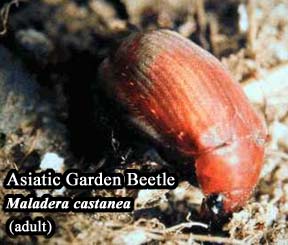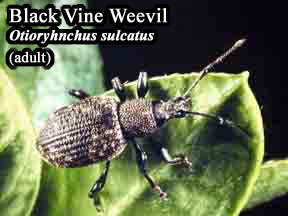Astilbe (Astilbe)
Plant Health Problems
See Perennials for a detailed discussion of problems that may occur and are common to most herbaceous ornamentals.
Diseases caused by Fungi:
Leaf spots, Cercospora.
Leaf spots are very common, typically sharply delimited necrotic areas on plant leaves caused by a wide variety of pathogenic species. Leaf spots usually are favored by wet conditions and may become important if a large number of lesions are present or if they start to coalesce.
Under those conditions, control may also be achieved with the use of fungicides applied as soon as symptoms are visible. Among the compounds registered for use in Connecticut are thiophanate-methyl and sulfur. Consult the label for dosage rates and safety precautions.
Powdery mildew, Erysiphe spp.
These fungi are obligate plant parasites which grow vegetatively on the plant leaf surface, sending haustoria, structures which absorb food from the host, into epidermal cells. The white mildew seen on the leaf is a combination of vegetative mycelium and spores borne in chains on upright conidiophores. Wind-dispersed mildew spores can germinate without free water under high humidity conditions, and disease is often severe when conditions are humid but dry. Small black over-wintering structures called perithecia are often found in powdery mildew affected areas.
Control may also be achieved with the use of fungicides applied as soon as symptoms are visible. Among the compounds registered for use in Connecticut are potassium bicarbonate, ultra fine oil, sulfur, triadimefon, or thiophanate-methyl fungicides. Consult the label for dosage rates, safety precautions, and directions for use.
Wilt, Fusarium.
This pathogen infects the vascular or water-conducting tissues of plants, and causes wilt symptoms by impairing water flow. As a result, symptomatic plants may flag or wilt on one side of the plant, leaves may be twisted and yellow on one side, turn brown and hang down prior to drying up. Overall, the plant exhibits drought symptoms despite adequate soil moisture. If the stem is cut open near the base, the vascular tissues are typically brown or discolored.
Wilt control involves removal of infected plants and associated roots and soil. The pathogen survives in soil and plant debris for long times, so disposal of plants and soil without spread is important.
Insect Problems Asiatic garden beetle, Maladera castanea.
Asiatic garden beetle, Maladera castanea.
Asiatic garden beetle adults feed upon a great variety of plants, and astilbe is one of its favorites. The beetle is about 1/3" long, reddish-brown, having an iridescent sheen. The beetles begin to emerge late June, with their greatest abundance usually about the middle of July. Because eggs require moisture to develop, this pest may become scarce following a dry summer. The eggs are laid in July in the soil, and the grubs feed on roots near the surface, going downward to a depth of about a foot to overwinter. Late in April, they return to the surface, feed for a time, then enter the prepupal stage, and pupate in late May or early June. From 2 to 4 weeks later, the adults emerge. There is one generation each year. Feeding on the foliage of astilbe can be prevented by using sprays of acephate, azadirachtin, carbaryl or malathion, which are among the products registered for use against this pest in Connecticut. Imidacloprid, applied early in the season as a soil drench, will provide season-long systemic control. Consult the label for dosage rates and safety precautions. Treatment of lawn areas should reduce the numbers of beetles.
 Black vine weevil, Otiorhynchus sulcatus.
Black vine weevil, Otiorhynchus sulcatus.
Another common pest is black vine weevil. The larvae of this weevil often injure astilbe plants in nurseries and ornamental plantings by feeding on the roots. The grubs devour the small roots and feed inside the larger roots, weakening them. Severely injured plants die. The 1/2" long adult weevil is black, with a beaded appearance to the thorax and scattered spots of yellow hairs on the wing covers. Only females are known, and the adults are flightless. They feed nocturnally, notching the margins of the foliage. Feeding on astilbe may be difficult to detect due to the shape of the leaves. The legless grub is white with a brown head and is curved like grubs of other weevils. Adults and large larvae overwinter, emerging from May - July. The adults have to feed for 3-4 weeks before being able to lay eggs. Treating the soil with insect pathogenic nematodes may control the larvae, and should be the first line of defense. Acephate and fluvalinate are among the compounds registered for control of this pest in Connecticut, and may be applied when adults are feeding and before they start laying eggs. The usual timing for these foliar sprays is during May, June and July at three week intervals. Insecticide resistance is very common; be aware that adults may appear to be dead following contact with fluvalinate, but may recover from poisoning within a few days. Consult the label for dosage rates and safety precautions.

